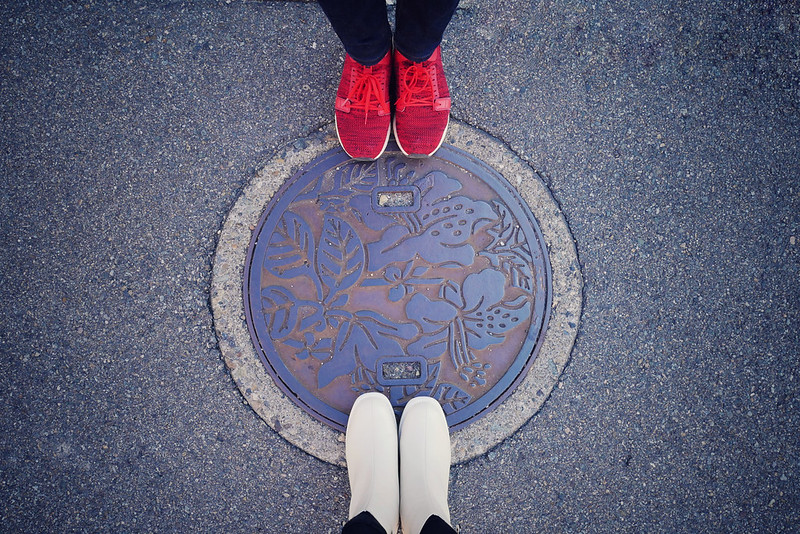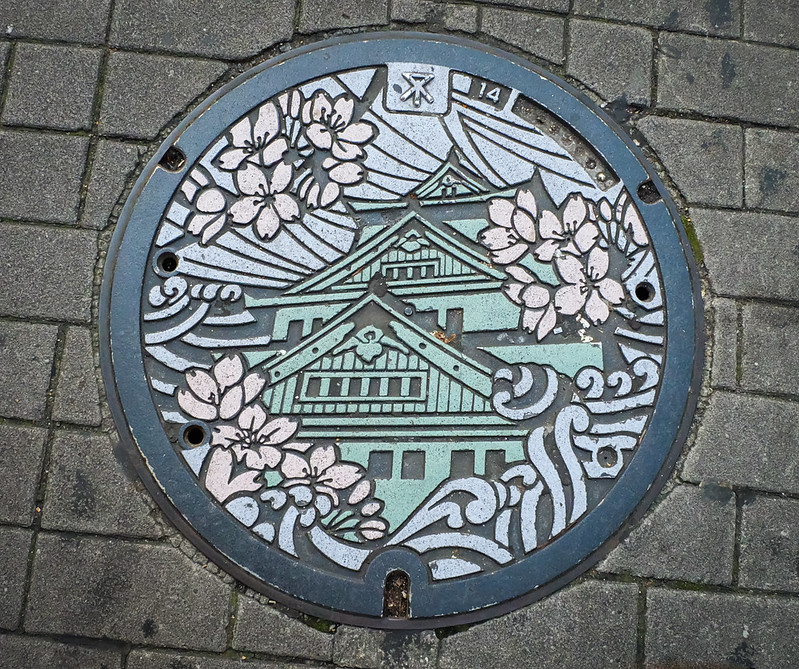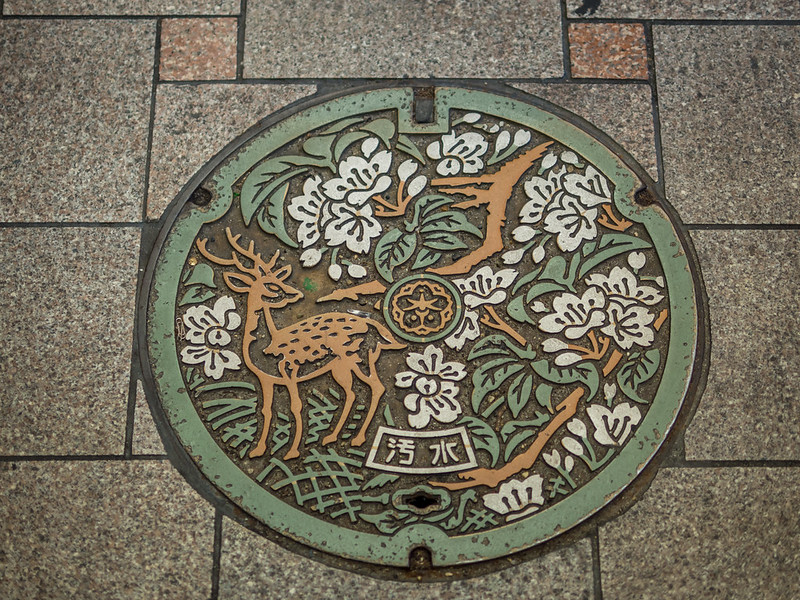
Contemporary Art: Japanese Manhole Covers
It seems unlikely that anyone would give a manhole cover a second glance as they pass it by. Manhole covers are generally round, and the reasons for this were made popular in a Microsoft job-interview question of why they were so. (The question was meant to discover a person’s thinking process and had more than one correct answer – because heavy round covers can be more easily moved by being rolled, a circular shape has a smaller surface than a square one, etc.) However, it is not uncommon to have other manhole shapes such as rectangles and squares. In the U.S., particularly in Nashua, New Hampshire, manholes and their covers are triangular in shape and they point in the direction of the underlying flow. But they will soon be phased out because they are not big enough to meet modern safety standards and a manufacturer that produces large enough triangles cannot be found. There are still some triangular manholes in San Francisco and in Hamilton, Bermuda.
Osaka Castle manhole cover.
Manhole covers have a design that must provide traction for traffic moving over it. This is essential when the ground gets slippery in wet weather. An effective design has multi-directional lines for better drag. In Japan, manholes and their covers are typically circular in shape. But what makes the covers so unique is that nearly 95% of the 1,780 municipalities of Japan have engraved or painted manhole covers in multiple colors and intricate designs. Popular manhole cover designs are official flowers, trees, animals, local spots, and other things a particular municipality is known for. These designs do not only provide traction, but they are also recognizable from every direction, with an artistic appeal that will surely last for several decades or longer.
Deer designed manhole in Nara.
In the late 1950s, larger cities in Japan were using original manhole cover designs. When the engineers from the big cities worked on sewer systems in other parts of the country, they brought the manhole cover designs with them, which is why you can see Tokyo Nagoya manhole cover designs in other parts of Japan. In the 1980s, the proliferation of more artistic and original manhole cover designs spread throughout Japan. According to Noboru Fujiwara of the Japan Ground Manhole Association, credit for making visible and artistic manhole cover designs goes to Yasutake Kameda, a Japanese ranking bureaucrat in the construction ministry. Only 60% of Japanese households were part of the municipal sewer system. He needed to raise social acceptance for the costly public works that largely took place underground, unnoticed and under-appreciated. Kameda thought of making water systems more visible by encouraging residents of cities and even people from smaller communities to take part in developing unique cover designs with local appeal.
Today, Japan is known for having beautiful manhole covers that make it impossible for people to pass without appreciating the details in the otherwise mundane.
